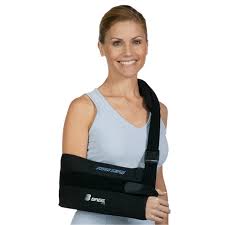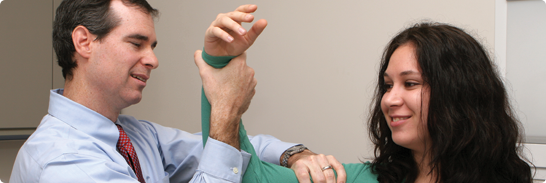Shoulder pain can affect much more than just our comfort. It can limit our ability to pick up our children, carry groceries, or even reach for something on a high shelf. If you’ve been struggling with nagging shoulder pain, there’s a strong possibility it may be due...
A stress fracture is a small crack within a bone. However, unlike acute fractures, which occur from a sudden injury, stress fractures gradually develop over time and are common among athletes, runners, and individuals with physically demanding lifestyles. These tiny,...
Tendons are tough, fibrous tissues that connect muscle to bone and play a critical role in our movement, from helping us swing a tennis racket to allowing us to lift groceries or climb the stairs. But for all their strength and flexibility, tendons are also...
What You Need to Know During Shoulder Surgery Recovery

Post-surgery rehabilitation is an important step in recovering from shoulder surgery. After undergoing surgery, there are some things one should keep in mind to make the period less stressful and more manageable. One of the things to remember is that you should not be moving the shoulder too much; too much movement of the shoulder could result in a sling.
Physical therapy is essential for one to regain their strength and range of motion on the treated shoulder. There are several stages involved in post-surgery rehabilitation and they are immobilization, passive movement of the affected arm and shoulder and active movement.
As immobilization suggests, the shoulder is immobile during this phase, typically in a sling. During the immobilization phase, one’s movement is restricted to the wrist and the elbow. Pendulums are the most common type of exercise during immobilization. It is done by using your body to swing your arm as it dangles. Care should be taken at this stage to keep the shoulder immobile as moving it could damage the repair done.
A few days after the surgery, typically a week or so, passive movement therapy commences. It involves one’s arm being moved while they lie down by either a machine or a therapist. It is meant to prevent the stiffening of the shoulder while healing and to keep it flexible and supple.
Active movement therapy usually starts around the 5th week. At this point, one is allowed to gradually move their shoulder. The exercises one performs increase gradually: first one would most likely need to use their other arm to lift the arm that underwent surgery. This is due to the fact that the shoulder is not yet strong enough to lift the arm by itself without risk of injury. Once a person has undergone active movement therapy for some time, they can start doing strengthening exercises.
After about 4 months, one is almost fully recovered and the strengthening exercises can be intensified. This will include exercises such as push-ups and sports. Gentle swimming is also a great way to fully recover as it offers additional resistance the shoulder should overcome.
One thing to keep in mind is that after surgery and during the therapy, pain and discomfort are to be expected. Cold compression wraps and ice packs are one way of reducing discomfort when undergoing physical therapy. If the pain or discomfort is great, painkillers can also be recommended by one’s doctor for they are usually provided to deal with pain. In the case that one feels too much pain or is in constant pain, exercising should be scaled down.
Sleeping is a challenge after one undergoes surgery. It is recommended that one sleeps lying on the side that was not operated or on their back. Sleeping on the operated arm is not only painful but can cause the shoulder to be injured again.
During the first few weeks, most daily activities should only be done using the arm that has not been operated on. This can be quite frustrating as tasks that were a breeze take longer to perform or require asking for help. Whatever one does, however, they should not use the arm until the time the doctor allows them to or are instructed to do so.
It is also important for one to remember their follow-up appointment. This enables adoctor or orthopaedic specialist to determine how the healing process is going. It also provides a chance to curb any complications that may have arisen. For more information contact Premier Orthopaedics or download our free eBook, The Pre-Operative Guide to Shoulder Surgery.



